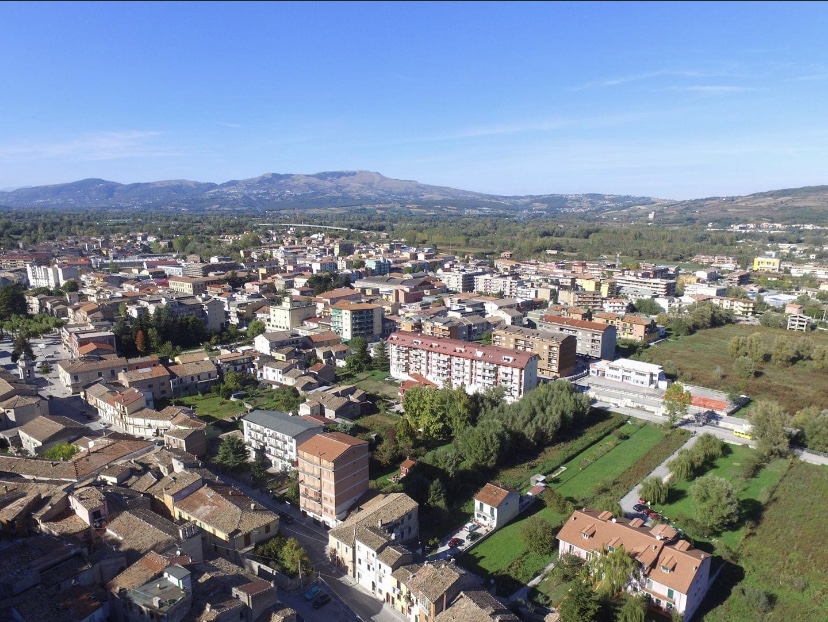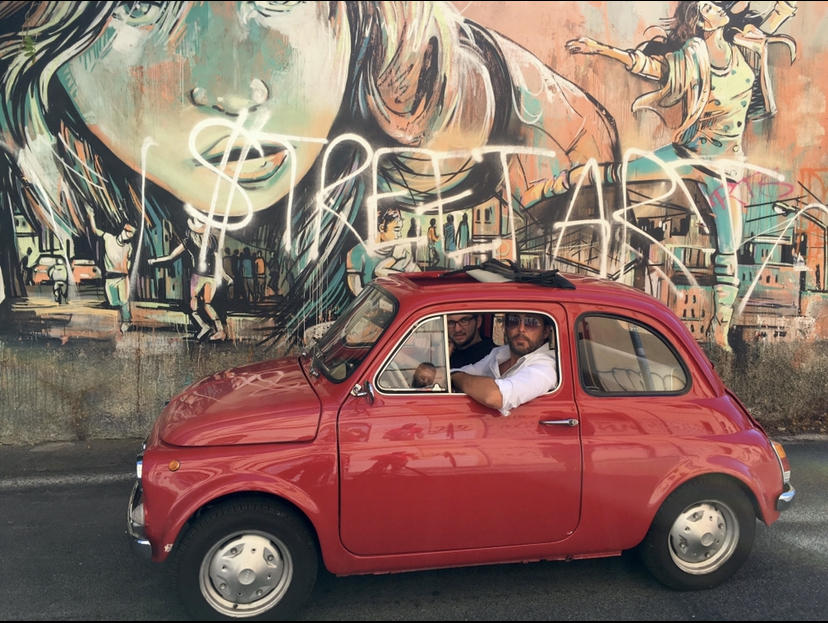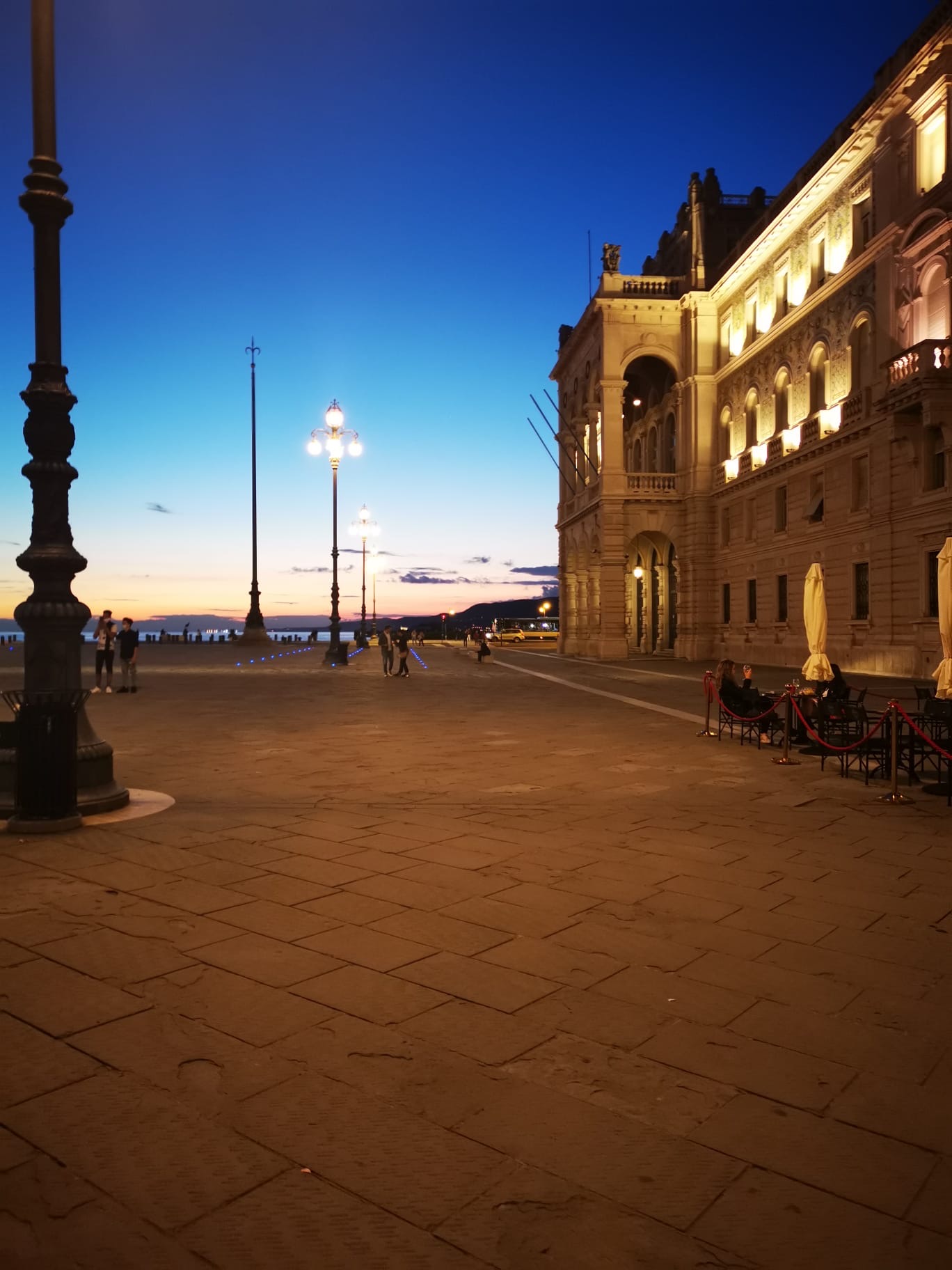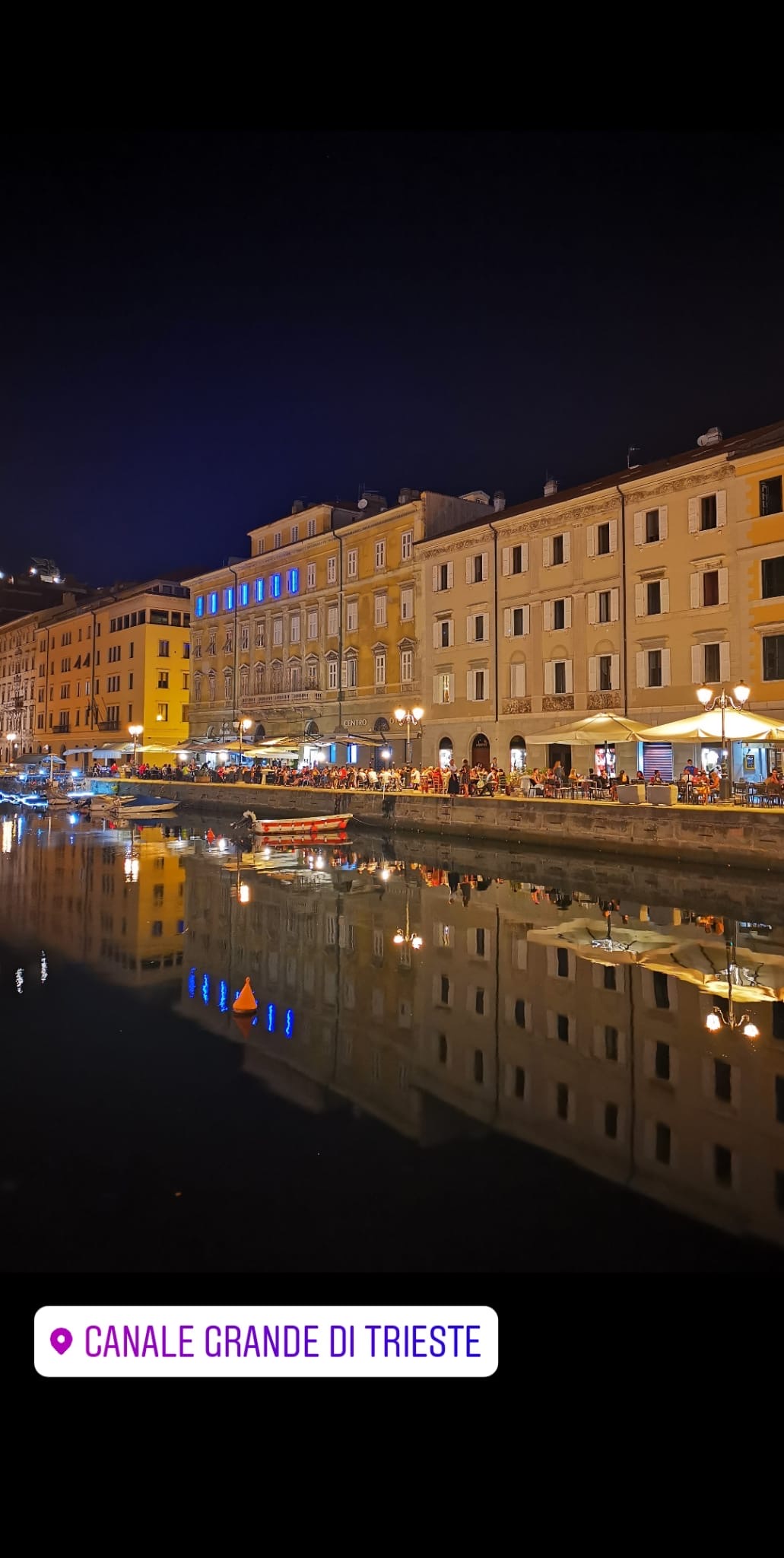Last year, Mariapia came to my school as an exchange student. It was the first time that I had had an exchange student in my class. I was both excited and nervous about this. Would she be highly critical of my Italian as a non-native speaker? Would she be frustrated to be in an Italian language class when she was clearly here to better her English? Would this be a unique opportunity for my students? I had so many thoughts before the first day of school in September but soon after, I realized that this would be a learning experience for both of us. I actually invited Mariapia to be critical of my language, my course and my teaching method. I knew I was opening myself up to the highest form of criticism possible for a teacher but in the end, I am glad that I did. We were able to build a rapport and learn from one another.
I have always taught my students about the Italian school system based on what I had learned through my own research and my experiences as a student at the Università degli studi di Firenze in Florence, Italy while earning my Master’s degree. However, having Mariapia in my class was invaluable because she was able to share her experiences with us about the Italian school system. Both Mariapia and her twin sister, Carla, had decided to attend foreign high schools to better their English and of course, to gain an experience that no doubt will end up having an impact on the women they will become.
I recently reached out to Mariapia and asked if both she and her sister would like to answer some questions about their experience. I do realize that this was almost like assigning another homework assignment to the teens but they were more than happy to do it and I am grateful that they decided to share their experiences.
I feel like I’ve been influenced by the portrayal of the U.S. in the media which is obviously very romanticized but honestly, I was not disappointed.
Mariapia, foreign exchange student
Mariapia and Carla both decided to go through EF Language Year Abroad. When I asked Mariapia how they chose this particular program and how they even knew these opportunities existed, she told me that she had first been told by her eighth grade teacher about study abroad opportunities and then had decided to do her own research when she felt ready to participate. She watched YouTube videos and researched different agencies online and found out that EF was having an informational session in Catania, Sicily. After attending this session, they were sold on the program. Both girls had to be interviewed in order to be accepted into the program to assess their level of English and the interviewer agreed that both Mariapia and Carla were very mature and ready to participate in a program like the one EF offered.
“I would like Italian schools to be more “modern” and innovative.”
Carla, foreign exchange student


Carla: “me and my mate George Harrison”
The process of obtaining a visa, getting the necessary vaccinations and finding a host family was a long one but in the end, well worth it. In a phone conversation with Mariapia to ask some additional questions, she told me some interesting stories that I hadn’t originally asked about but I think are worth sharing. First, in order to obtain the visa to study, they had to go to the American Embassy in Naples and answer a lot of questions. One thing that they had to prove was that none of them had ever committed a crime. It turns out that her father shares a name with someone who did commit a crime and it took “quite a while to prove that he wasn’t that person!”
As far as finding and being matched with a host family is also a process. First, you are encouraged to make a video of yourself to help the process. Mariapia was a little stressed with school at the time and never made her video. She did fill out some paperwork where she expressed her interests and goals, however. She tells me that you can choose the state you want to study in for an additional fee, which she declined to pay. Her twin sister, Carla, was matched right away to a family in England. For Mariapia, the process was taking a bit longer. “I was nervous that I wouldn’t be chosen or be matched well since I didn’t make my video,” said Mariapia. And in the end, she was matched with one of my students and says she couldn’t have been happier. “They love theater, have many pets, live on Long Island in New York. I couldn’t believe how perfect this match was,” she goes on to say.
“They wanted me to have fun but also to be careful and most importantly, to always answer the phone when they called otherwise they’d start planning my funeral.”
Mariapia, on how her parents felt about her studying in America

Mariapia takes the NYC subway for the first time on a class trip 
Here is my interview with the sisters on their experiences. Mariapia chose a six month placement while Carla chose a full year abroad.
Matt: Why did you decide to study English?
Mariapia: First of all, English is a mandatory subject in the Italian school system and I’ve always loved studying it because it helped me connect with my interests: music, movies, books. From a very young age I was surrounded by this language, I even tried to speak it, but of course what came out of my mouth was just gibberish!
Carla: I’ve always enjoyed studying foreign languages, especially English, which I think is very important to know nowadays.
Matt: Why did you choose America or England? Why did you choose a half year or a full year?
Mariapia: I feel like I’ve been influenced by the portrayal of the US in the media (especially on tv) which is obviously very romanticized but, honestly, I was not disappointed. Actually, I love this country even more now that I’ve visited it and got to know it a little more. I chose to do six months instead of the whole year because I used to do theater and I didn’t want to miss my show in June. I regret choosing that for many reasons, but I’ll say this: life doesn’t always go as planned, so carpe diem And just have fun.
Carla: I chose England over America because I’ve always been interested in the British culture and lifestyle, the (widely known) British humour, and above all things, I’ve always loved the British accent. I chose to do the whole year because I knew it would have taken me some time to get used to all the new things around me, and also because I thought that 6 months weren’t enough for me to improve my English.
Matt: What did your parents think about you being so far from home?
Mariapia: My dad didn’t like it one bit, but he trusted me enough to let me go. My mother was happy for me and very excited from the beginning, but also very nervous. They wanted me to have fun but also to be careful and, most importantly, to always answer the phone when they called otherwise they’d start planning my funeral.
Carla: They have always encouraged me and my sisters to travel a lot and to go study abroad if we had the chance, so I guess they were happy about it.
Matt: What did your friends think about you studying abroad?
Mariapia: They were happy for me, although most of them didn’t even know it was a possibility. They even admitted that they were jealous and that made me realize how lucky I was. One of my friends actually visited NYC not even a month before I went there, and she said she was sure I would love it.
Carla: I reckon, most of them had never heard of something like this before, or at least they didn’t know it was possible to study abroad while still in high school, so they were a bit surprised. While others, who knew what that was about, were a bit concerned that I would have basically “missed” one year of school in Italy. But I think after all, they were happy for me.
Matt: What have you found to be the main differences between the schools you attended abroad and your Italian high school?
Mariapia: The biggest difference, in my opinion, is the importance of individuality: in the US, you can choose your classes and “customize” your high school experience according to what your interests are. In Italy, you have to choose an high school that is specialized in a certain field (either science, classical studies, psychology, art, music, etc…) and that’s what you’re gonna study for five years. Another difference is that oral tests aren’t a thing in the US school system, but in Italy they’re fundamental. Also, we have crucifixes instead of flags!
Carla: The main differences I can think of are: 1. Oral tests (or what we call “interrogazioni”) don’t exist in the UK. However, they have a (large and complex) variety of written assessments, compared to Italy. 2. In Italy we start and finish school earlier (usually from 8 am to 1 pm), we don’t have a canteen and we have our lunch at home. But we have school on Saturdays. 3. In Italy you always stay in the same classroom with the same classmates, and it’s the teachers who switch classes. 4. In most English high schools they call teachers by their first name. We only address them as “teacher … ” (But most times you don’t need to say their last name either)
Matt: What things do you prefer about each school?
Mariapia: Personally, I’ve always hated going to school here in Italy, but I loved the American high school experience. I genuinely looked forward to waking up in the morning. The only thing I like about the Italian school system is that we have a longer summer break.
Carla: I prefer the fact that British students have much more free time within the school hours, especially the last two years of school that they can spend however they want (doing their homework in the library so that they’re free in the afternoon or socialising with other students in the common room). However, I would say one thing I prefer about Italian schools is that students are not required to wear a uniform and sometimes they don’t even need to follow a dress code. This certainly gives us the chance to express our individuality.
Matt: What was your experience like with your host family?
Mariapia: I feel like I was very lucky to have been chosen by my host family because from the moment I read their description on the EF platform, I knew that we were a perfect match. We did a lot of fun activities together, we had similar interests and even the simple things, like going to the supermarket or having dinner with them, were just great.
Carla: My host parents were very nice and typical English people. But I must say that, since British host families are paid and they’re not volunteer, it’s hard to believe that they’re hosting international students because they’re genuinely interested in knowing their cultures, and not for money. Especially if they’re hosting more than one student at the time.
Matt: What is something your would like to take from your host high school experience and would like to see implemented into your Italian high school?
Mariapia: I feel like we should use technology more, like you do in the US, because here it’s still underestimated and frowned upon by teachers who are obsessed with tradition/don’t know how to use it. I’d love to see some high school spirit here as well, I never felt like I belonged in my high school but during my brief stay at Comsewogue I was a proud warrior!
Carla: I would like Italian schools to be more “modern” and innovative. We should definitely use computers, or technology in general, more. This can be also a big opportunity to include people who can’t afford to buy all those books and school materials every year.
Matt: Finally, how has this experience changed you?
Mariapia: Hopefully I improved my English, but more importantly I feel like I’ve become more independent and mature. I cherish many wonderful memories of this experience that made my desire to live in the US grow, but I’ll also try to learn from my mistakes and become a better person.
Carla: I think it helped me improving my language skills mainly. But also, being in a foreign country without my parents, it surely made me more independent and more confident to deal with things on my own.

Mariapia having gelato in NYC on a class trip 
Mariapia visiting the Central Park Zoo on a class trip 
Mariapia wearing the Italian Honor Society crown as our honorary member!
One thing that Mariapia would often say to me while she was here was that she was amazed at how American teachers seem to be so much more invested in their students and truly care about them. She said that American teachers actually care if their students learn or not and this made a lasting impression. I am so glad to have met her and that I could have been a part of her (good) experience here.
I am truly impressed with the level of English that Carla and Mariapia have been able to achieve and the progress they have made because of this unique study abroad experience. Their answers were thoughtful and insightful. They are both well-spoken young ladies who have clearly made the most that this program had to offer them.





















